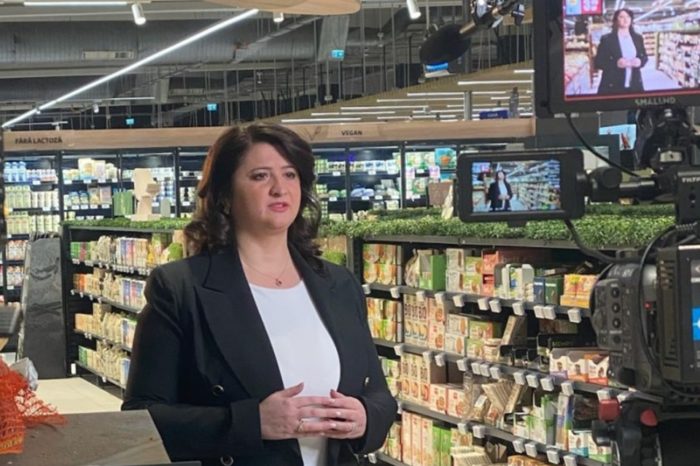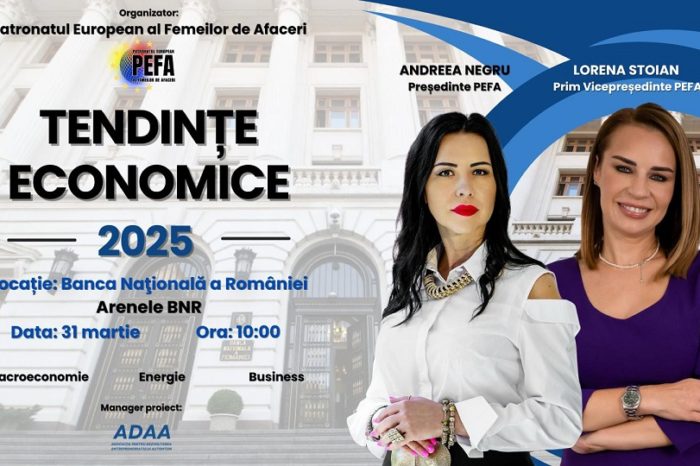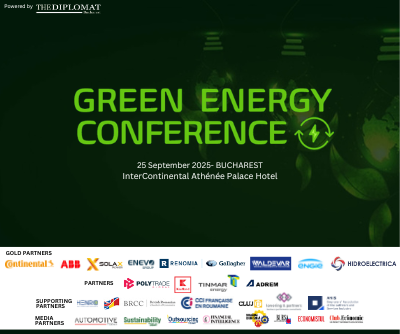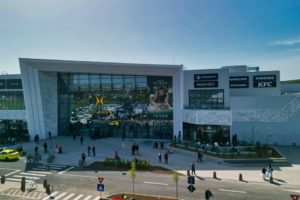Cristina Mancas, Schneider Electric: “Communication is a key tool to build trust and develop a richer organizational culture”

“Trust and confidence have suffered from severe erosion during the pandemic, we need to restore them and in doing so we also show the people how important they are to help us build together the future of work,” Cristina Mancas, Vice President of HR SEE at Schneider Electric told The Diplomat-Bucharest.
“The main challenge for our industry is and will be for quite a while from now on recruiting and retaining the best talents in the company and in Romania for that matter. We see that the brain drain continues to happen even more so now, when people can stay here and work for any company in the world. This is a trend we all need to work hard to reverse.”
What are the current and future challenges you are dealing with in achieving your HR business objectives?
The main challenge for our industry is and will be for quite a while from now on recruiting and retaining the best talents in the company and in Romania for that matter. We see that the brain drain continues to happen even more so now, when people can stay here and work for any company in the world. This is a trend we all need to work hard to reverse.
Another challenge, no less important, is keeping people morale and engagement at high levels. Over the past years, the lack of direct interaction has generated trust erosion, anxiety. There is a certain need to rethink the concept of ”team building” completely and reshape it based on the new tools we have. We had to admit that online can only take you that far, that for mutual trust, psychological comfort, real camaraderie, you also need real human interaction, at least from time to time.
In Schneider Electric, we obviously pay attention to both topics. We are investing in creating an employee value proposition that will stand out in the market and will make as an attractive employer of choice. We believe that our meaningful purpose, our inclusive and empowering workplace, our culture and our focus on the individual needs of our employees are the reason why talents are applying to work in our company.
On the other hand, for our current employees, we are resuming some activities not previously allowed due to Covid. We started organizing micro team building events, we tried to turn the office gatherings, that we have resumed lately, into small celebrations and theme parties and we see that people really need to see each other again, really need to feel how it is to work shoulder to shoulder again.
What is the company’s approach to recruitment this year?
Besides the usual recruitment processes, this year we are looking to reshape our referral program, but Now we are placing a stronger emphasis on it, we simplified the way we recognize our colleagues that recommend their friends and acquittances to work for SE . As we know the key differentiation for a team is how they work together and find the cohesion. We like having colleagues who feel good about coming to the office because that is where they can meet familiar faces, people who share their values and the company values too.
What game-changing initiatives have been run in the company in terms of HR and recruitment so far? What is the evolution in this respect this year?
Several years ago, we launched a group wide online platform that was aimed at providing more opportunities within Schneider Electric firstly to our internal candidates. Open Talent Market (OTM) allows you to participate in remote or in-person projects from all over the world, on top of your normal responsibilities, that enable our employees to develop further their skills and experience new things Furthermore, it allows people to know and apply to full-time positions within Schneider’s network of 529 office locations across 118 countries. And also through OTM they can look for mentors who can offer a wide range of professional and personal support. OTM is Schneider’s way of integrating the gig economy to help all employees unlock their potential and to be 100% in charge of their careers and development
Locally, the referral program I already mentioned, which offers instant rewards to people who are recommending us valid candidates, has already proved an excellent contributor not only to the overall recruitment effort, but also to the improvement of our organizational culture of cooperation.
Finally, we are training ourselves to constantly think outside the box, as not only the obvious candidates are always the ideal ones. We try to look beyond the skills and test results and work experience, to assess the potential of the candidate, his or her ability to grow when offered a new professional context or a new challenge, we look for attitude and opennes and we in Schneider also believe that diversity can bring amazing results to our teams
How did 2021 look from HR’s point of view in terms of hirings, talent retain and people attrition? What are the plans for 2022?
From our perspective, 2021 looked quite similar to a normal year. All the adjustments required by the pandemic were made in 2020, so in 2021 we were already familiar with the situation and were able to manage it quite well. As mentioned, the only area that was more challenging was recruitment.
Besides the above programs mentioned, what really helped in this area were internship programs in place, providing a rich talent pool from where we could select very valuable colleagues.
What is the approach on DEI aspects (diversity, equity, inclusion) in the company? What should be considered and prioritized in this respect?
We truly believe that diversity in our team can be a very strong asset and of course we are always keeping a very open mind during the selection process. It goes without saying however professional competencies, performance and definitely attitude matter a lot when we select our new colleagues.
We also need to bear in mind DEI doesn’t stop at the recruitment stage. It is not enough to have just a good mix of candidates when hiring, you should also look at diversity and equity when it comes to salary reviews or opportunities for promotion. Our DEI approach covers the entire career span of a colleague, and as such it enables us to learn, adjust and advance.
What Learning & Development projects have proved successful in 2021 and what are the L&D priorities for 2022?
A concept that proved very valuable to us lately is personalization. When dealing with people, we know we deal with unique individuals, who have distinctive professional and personal contexts that reflect on their performance. Therefore, we implemented diverse and differentiated training sessions, filling those competence gaps that were specific to small groups of individuals. This initiative proved more time effective and successful, as the people felt motivated to learn exactly what they needed in order to work better – all specifics, no generalities.
In line with the same concept, we organized mini team building sessions. These were small gatherings or celebrations that were observing all restrictions imposed by the pandemic, yet were able to bring people together in a meaningful and pleasant way, in a time when we were all craving for direct interaction and real, offline, team work.
We also implemented a program to promote reading – as this was a preferred pastime during our indoor months. The program was greatly successful, and we were glad to receive the positive feedback from our colleagues. We offered books as gifts, as give aways, we distributed vouchers to online bookstores, we put an emphasis on self improvement and professional development, but we also allowed them their own choices.
For this year, we are placing an emphasis on communication as a key tool to build trust and develop a richer organizational culture.
We are also quick to implement all legislative changes that reflect into benefits for our employees. Thus, as of July 1st, we are increasing the value of food tickets we distribute to them, according to the new provisions of the law.
The business operations are continuously digitally transformed. What kind of projects’ initiatives have been run in the HR departments to support the digitalization of processes, operations and most of all, how are being supported the people’s adjustments to the new technologies?
We are celebrating 25 years in Romania this year and time seems to have flown by in the blink of an eye. In our industry, we have always been pioneers of new technologies and this is something that keeps you young and relevant no matter how many years pass by. We have developed and matured and we are now one of the largest organizations in our region, employing hundreds of talented Romanians and developing their careers here and abroad.
So it is natural that today we are at the forefront of digitalization, and the pandemic has shown us how important it is to enable people to help our clients effectively without leaving their homes, by using complex software tools, AI and AR.
Within our department, we want to digitize the HR function just as much, to simplify as best as we can our internal processes. Right now, for instance, in a country that remains largely paper based, we are implementing DocuSign company wide, so that we can circulate official HR documents with our colleagues without having to call them to the office.
How it is being build and maintain the “belonging at work” feeling among the employees? What initiatives / projects have been developed in this respect?
For us, it all starts with the input that we collect from our colleagues, their feedback on the existing programs, their needs and ideas for the future. We try to create a climate of psychological safety, encouraging them to speak up and trust us with their honest opinions. And we use what we learn from them to develop new projects that we first test – as pilots – in various markets.
Rather than developing just one big program are now looking at mixing projects, activities and initiatives, implementing them in a different way, depending on the situation of our colleagues.
Trust and confidence have suffered from severe erosion during the pandemic, we need to restore them and in doing so we also show the people how important they are to help us build together the future of work.














